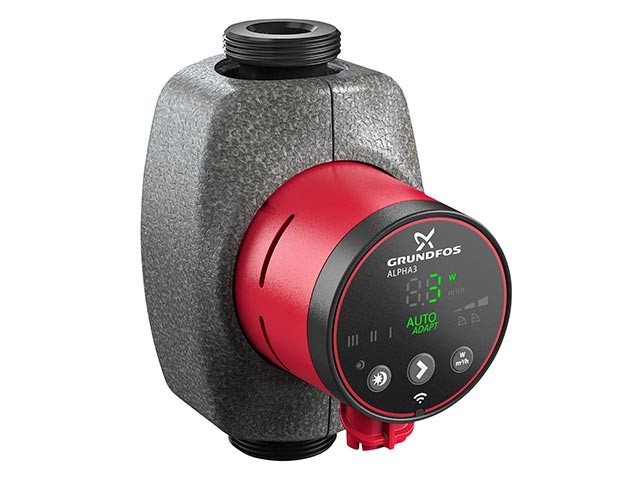Heating cost savings with replacement heating pump - Calculate Now
Reducing water costs through optimized control
Water costs account for a large proportion of the ancillary costs of living. However, they can be reduced with targeted control. Some possible examples for lowering water costs will be briefly presented below.
Saving water when flushing toilets
In public buildings in particular, a large proportion of water consumption is caused by toilet flushing. Here, either flush valves or flush cisterns are used. In the case of the flush valve, this is often referred to as a self-closing valve. After a previously set time has been reached, the flushing process is terminated. There are major differences here between older and newer models. The same applies to the classic flushing cisterns, which everyone also has at home. The following table shows how high the water consumption can be:
| Water consumption for | Flush valve | Flushing cisterns |
| Older models/flush | 15 l | 9 l |
| Newer models/flush | 9 l | 4,5 l |
In addition, modern flushers have a stop button that can be pressed to control water consumption in a more targeted manner. In the case of pressure flushers, it is also possible to set a shorter time until the flushing process is completed.
Urinal basins are also frequently used in public buildings. They are often found as in-line urinals with central flushing. Here, too, water costs can be saved through targeted control. For example, the intervals between the individual flushes must be adapted to the respective times of day and week. If the building is not frequented on weekends, the central flush can be switched off completely. On days with little visitor traffic, the intervals between flushes can be reduced.
In addition, water can be saved by choosing the appropriate urinals. Classic urinal bowls require four to five liters of water per flush. Modern suction urinals manage with just two liters.
Saving water when showering
In general, showers consume less water than baths - this should be sufficiently well known by now. But even here, additional water can be saved with targeted control. Two factors are decisive for water consumption when showering:
1. flow rate through the shower head
2. duration of the shower
The duration of the shower process must determine everyone for itself. The flow rate of water through the shower head, however, can be greatly reduced by using special shower heads. However, one should pay attention to the correct design of the shower heads, so that the usual comfort while showering is maintained. Due to the admixture of air in the water jet, it is still perceived as appropriate despite a lower water volume.
Calculation example:
A normal shower head uses about 21 liters of water per showering session. If you opt for a suitable energy-saving shower head, you can reduce water consumption to as little as seven liters for exactly the same showering process.
However, flow limiters are not only available for shower faucets, but also for the hand basin. If these are not present, up to 20 liters of water per minute flow down the drain. This does not have to be the case, because depending on the sink used, flow rates of only three to seven liters per minute are also possible with a flow limiter.
Saving water when rinsing and washing
Substantial savings can also be achieved when washing dishes and laundry. Even the use of modern appliances offers enormous savings potential here. For example, an old washing machine uses 100 liters of water for one wash cycle in the cotton program at 60 degrees Celsius. Modern machines, on the other hand, use only about half that amount.
Modern dishwashers save about 20 liters of water compared with older models. However, the optimum savings are achieved if both appliances are only switched on when they are also fully loaded.
Saving water in the garden
 Water can also be saved in the garden. There is no question that fruit, vegetables and plants need to be watered regularly. In many cases, modern sprinkler systems are already used for this purpose. It is important to ensure that only as much water is applied to the areas as they can actually absorb. For simple lawns, 15 to 17 liters per square meter of surface are completely sufficient.
Water can also be saved in the garden. There is no question that fruit, vegetables and plants need to be watered regularly. In many cases, modern sprinkler systems are already used for this purpose. It is important to ensure that only as much water is applied to the areas as they can actually absorb. For simple lawns, 15 to 17 liters per square meter of surface are completely sufficient.
When controlling the sprinkler systems, care should also be taken to ensure that watering takes place in the early morning or night hours. For one thing, plants absorb the most water in the early morning hours (around three to four o'clock) without letting it seep into the soil. For another, the risk of water evaporation is much lower during this time than in the blazing midday sun. Thus, the water actually benefits the plants and does not evaporate unused.
In addition, rain barrels can be set up and the rainwater used to water the garden. This allows for even more powerful water savings.
Similar Calculator Topics: Building, living, building services, housing, energy, energy technology, heating technology


